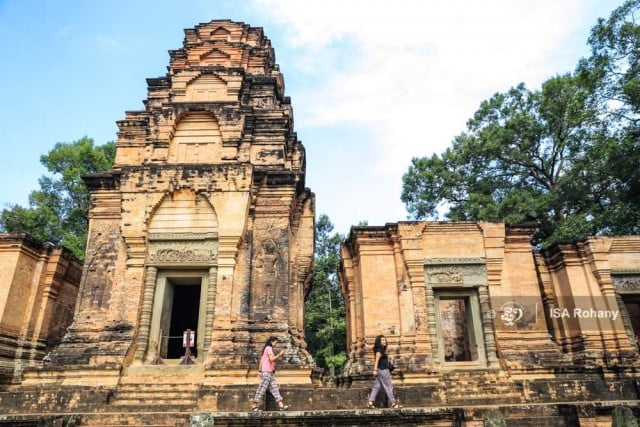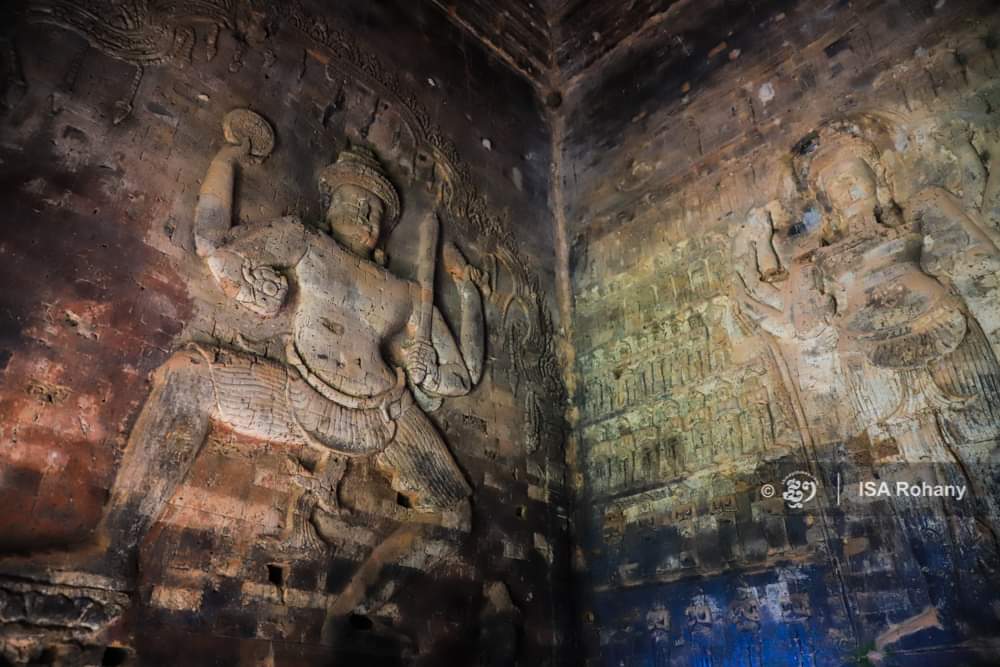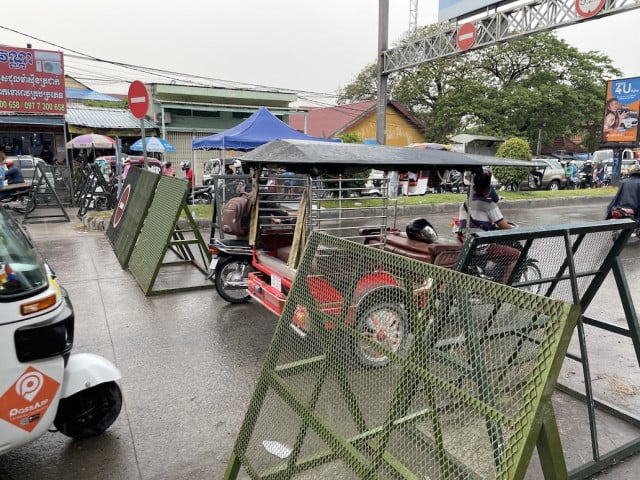Kravan: A Temple That Was Not Built by a King

- By Long Ton
- September 15, 2022 8:11 PM
While many temples in the land of Angkor were built by order of kings, some of them are the legacy of dignitaries or government officials of the time. Among the temples that were built by statesmen in the 10th century, the temple of Kravan and the temple of Banteay Srei truly stand out due to their beauty.
Kravan was constructed in 921 by the high-ranking official Mahidharavarman during the reign of King Hasharvarman I and dedicated to Lord Vishnu, one of the supreme deities in Hinduism, which was the state religion during many chapters of the Angkorian period.
The use of limestone can be seen on door columns and frames, lintels and many more features of the temple. Based on their studies of the various elements of the temple such as the lintels on top of the entrances, experts believe that its builders did not meet their set deadline for its completion.
In the history of architecture in Cambodia, Kravan is considered quite unique among temples built of bricks. Its five towers are aligned in a single row on one platform, which is quite pleasing to the eye. The sculptures on the walls of the towers were done directly on the bricks without any use of mortar to finish the work. Some evidence points to the temple having been decorated with paint. The two most impressive bas-reliefs are situated within the middle tower and the northernmost tower.
Inside the middle tower, the Angkorian sculptors focused solely on depicting Vishnu. On the northern wall, Lord Vishnu is seen sitting on the bird Garuda, which is his mount. Perpendicular to this wall, Lord Vishnu is depicted on the western wall in a standing position with his eight arms as small sculpted elements appear in the background. Above his hair is the sculpture of a crocodile although one is not quite sure whether this depiction of a crocodile can be linked to the mythical animal Makara—meaning crocodile in Sanskrit—that appears quite frequently in Hindu mythology. The archaeological sites of Kbal Spean on the slopes of Kulen mountain, Thommanon temple and Banteay Samre temple have sculptures featuring this crocodile as well.

In a scene sculpted on the southern wall of this same middle tower, Lord Visnhu can be seen with his legs positioned as if he was in the process of taking a step. Experts have identified this sculpture as being Trivikrama, an avatar (incarnation) of Vishnu and a word referring to three steps. According to an ancient Indian legend, Bali, the king of the Asura beings, wanted the world for himself and forced other beings to leave. Knowing this, Vishnu transformed himself into his dwarf avatar Vamana, took three steps and finally got the world back from Bali.

The northernmost tower features the deity Lakshmi, wife of Vishnu, and a lintel of the southernmost tower Lord Vishnu on Garuda.
When looking closely at each stone, on can see that some of them are marked with an imprint: CA, the acronym for Conservation d’Angkor, that is, Angkor Conservation. This indicates that these are stones hollowed and filled with cement or substituted to better support the temple’s structures when the temple was restored in the mid-1960s.

Today, being a temple in Angkor Archaeological Park—the 401-square-kilometer site that is a UNESCO World Heritage Site—the temple of Kravan is overseen and preserved by Cambodia’s APSARA National Authority supported by international cooperation.
Although it is located only three kilometres east of the famed Angkor Wat temple, Kravan still does not receive the visitors’ attention it deserves.
Song Daphea contributed to his story.















